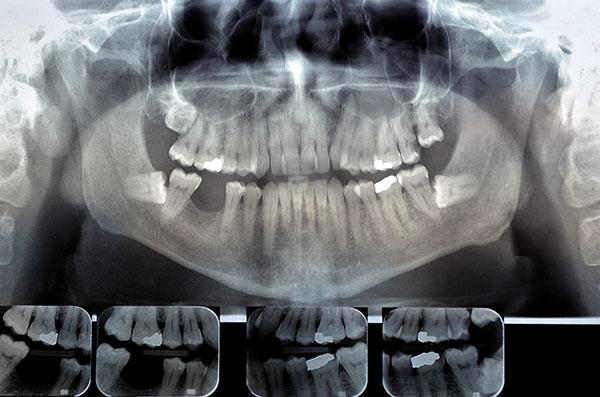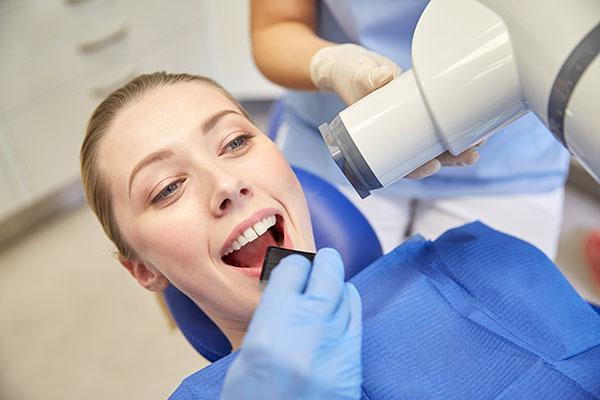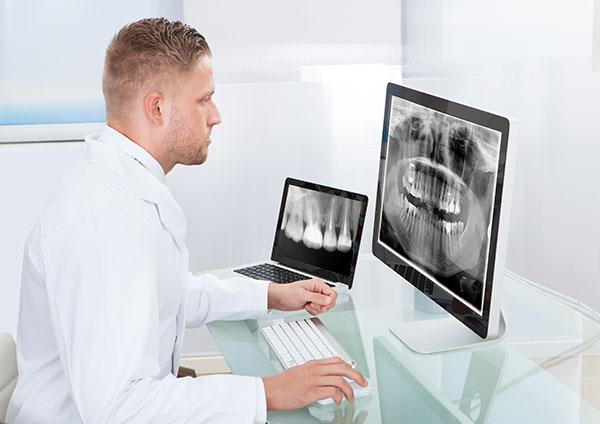What are radiographs?
Dental radiographs, or x-rays as they are commonly called, are a crucial part of dentistry. Dentists use radiographs to help diagnose oral conditions that cannot be seen by simply looking in the mouth.
Radiographs use a form of electromagnetic radiation that passes through the area being examined. Dense tissues like bone and teeth block the rays and appear white or grey on the image, while less-dense tissues such as gums appear black. This allows dentists to see the inner structure of the teeth and bone to check for abnormalities.

Who needs radiographs?
Dentists prescribe radiographs on an individual basis. Different factors will influence how often and what type of radiographs are needed. Age, oral condition, history of cavities or periodontal disease, restorative work, the presence of implants or wisdom teeth and any symptoms the client has are all taken into consideration.

Why are radiographs important?
Without radiographs, the dentist cannot make a proper oral assessment. Radiographs are used to monitor the development of teeth, diagnose cavities and dental infections, detect cysts or other abnormalities and assess the bone supporting your teeth.
Radiographs can be used to identify small issues before they turn into larger ones. A small cavity between your teeth may not cause pain and cannot be seen by looking in your mouth. Periodontal disease is usually painless and cannot be properly diagnosed without a combination of oral examination and radiographs. If these conditions are left untreated, they could progress and need more extensive and costly treatment and may even result in loss of teeth.

Weighing the risks and benefits
Dental x-rays do expose clients to a small amount of ionizing radiation. This type of radiation exposure accumulates over time, so efforts are made to reduce your exposure.
Radiation is found naturally in the environment (background radiation), and we are exposed to it every day. Background radiation involves your whole body while dental x-rays only involve a specific area. Dental radiographs only emit a small amount of radiation, which is even further reduced with newer digital technologies.
Radiographs are regulated with guidelines and exposure is kept well under the allowable safe exposure limits. Dentists follow the principle ALARA (as low as reasonably achievable) when prescribing dental x-rays and any dental professional taking x-rays must have special training. Use of a protective lead apron ensures there is no radiation exposure to other areas of your body and X-ray machines are checked regularly to make sure they are working properly. Dental x-rays have even been deemed safe during pregnancy if indicated.
Dental radiographs are an important part of an oral assessment, allowing dentists to properly diagnose and treat any dental problems. With proper dental care, clients can achieve and maintain optimal oral health. These benefits outweigh the minimal risks associated with dental x-rays.
So the next time your dentist or dental professional tells you that they need to take x-rays, keep this information in mind.
